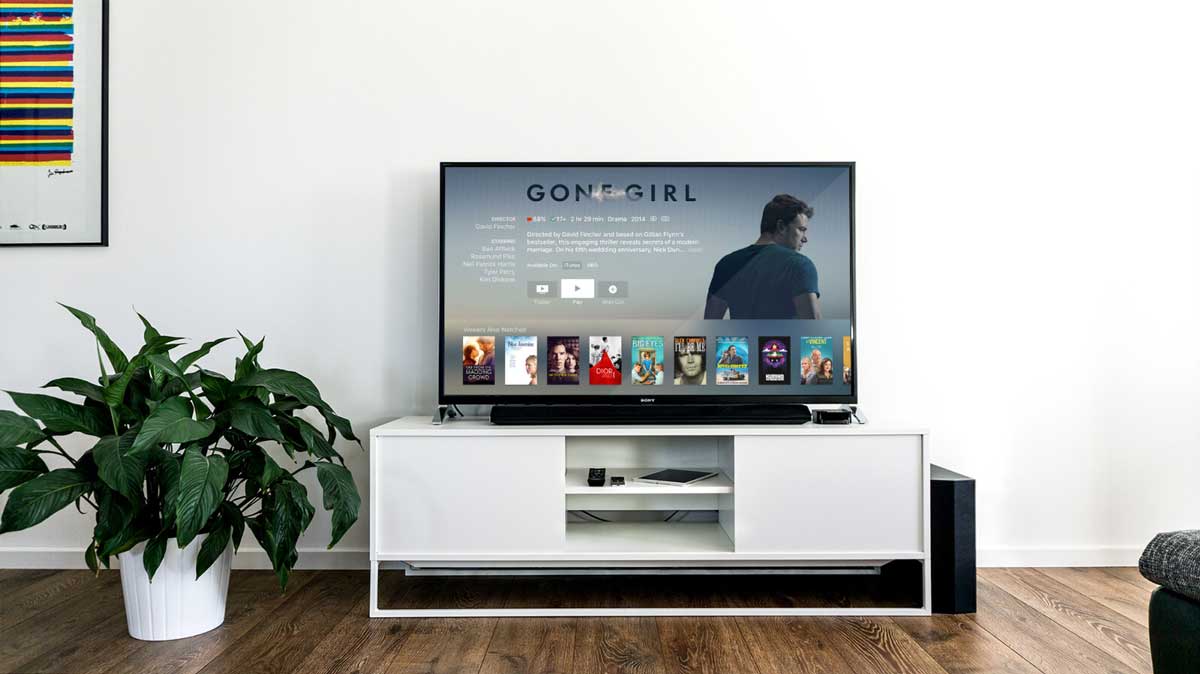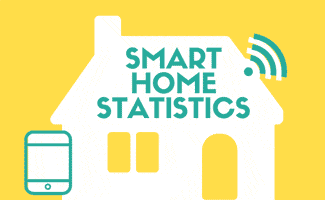22 Smart Home Statistics & Predictions (2024): Ready To Live Like A Jetson?
When you purchase through links on our site, we may earn a commission. Here’s how it works.

From appliances to lighting to speakers, everything connects to the internet, and there’s no stopping the Internet Of Things (IoT). Smart home equipment is becoming more affordable and less avoidable on the market as a result. Everything from our dishwasher to our cars will be “on the grid,” i.e., connected to the internet (and many devices and appliances already are).
Smart Home vs Home Automation – What’s The Difference?
We thought we’d clear the air on this quick since these terms get tossed around pretty loosely.
A smart home product is anything that makes your home, i.e., your appliances, etc. smarter. Usually, this involves connecting them to the cloud or some software component that lets them function on their own, or based on a pattern or intelligence algorithm.
Home automation is something that smart homes can do. It involves the automation of appliances and gadgets that you otherwise would have had to operate manually. For example – setting light switches on a schedule to turn off at sunrise and on at sunset is an example of a home automation feature that makes your home smart.
Top 8 Smart Home Statistics In 2022

Below are some smart home facts with linked sources for each.
- The worldwide market for smart home devices grew 11.7% in 2021 compared to 2020 with more than 895 million devices shipped. 1
- North America held the largest share of unit shipments in 2021 and grew 11.4% year-over-year. The Asia and Pacific region was the second largest segment by shipment volume with 31% of shipments and had a year-over-year growth rate of 10.8%. Western Europe and Latin America posted solid growth of 14.8% and 11.2% respectively. 1
- Revenue in the Smart Home market amounts to US$83.3 billion in 2020 (up from $23.5 billion in 2019).11
- 43% of smart home technology users are 18-34 years old.3
- The most popular products in 2019 are video entertainment (43%) followed by smart speakers (17.3%) and home monitoring and security (16.8%) while lighting and thermostat were lower on the list with 6.8% and 2.3% respectively. 3
- The average monthly savings from using smart home products is $98.30, which adds up to an average of $1,179.60 per year. 4
- In 2020, approximately two-thirds of security system owners, or 20 percent of U.S. broadband households, have an interactive security system. 5
- In 2020, 69% of households made smart home changes to their home or plan on buying a home with at least one smart home device.5
Top 7 Reasons Americans Use Voice Control
(note that it gets used on multiple devices, so these don’t add up to 100%):
- 57% for entertainment
- 33% for lighting – compare the top smart lights
- 33% for controlling of security products – find the best home security system and best security cameras
- 33% for shopping online
- 30% for controlling thermostats – compare the top smart thermostats
- 29% for helping with cooking and chores
- 28% for controlling smart appliances (refrigerator, laundry machine, etc.)
7 Smart Home Market Predictions For 2023 & Beyond
There are many guesses as to what smart home market growth will reach in the next few years. During our research, we came across these predictions:
- Overall the smart home market is expected to grow from $76.6 billion in 2018 to $151.4 billion by 2024, at a CAGR of 12%.6
- Predictions suggest there will be 70.6 million smart home households by 2023 (nearly double from 34.8 million in 2018). 2
- Household penetration of smart homes is 33.2% in 2019 and is expected to hit 53.9% by 2023. 2
- The United States had the largest percentage of connected vehicles sold in 2020. Of all passenger cars sold 91% are connected (more than 13 million connected vehicles sold in the U.S.) 7
- In 2013 the global smart home automation market was valued at 4.4 billion dollars and is estimated to be valued at $130.0 billion by 2025.9
- At the end of 2019 there were 7.6 billion active IoT devices, a figure which is predicted to grow to 24.1 billion in 2030.10
Learn More About Smart Homes
If you enjoyed this, you should read everything you need to know about smart homes, including how they work, what all you can control, and our picks for the top products and providers.
Sources: [1] International Data Corporation, [2] Statista, [3] Digital Media Solutions, [4] Dream Home Inspection, [5] SDM Mag, [6] Markets and Markets, [7] SmartCar [8] On World, [9] Grand View Research, [10] Transforma Insights, [11] Global News Wire



